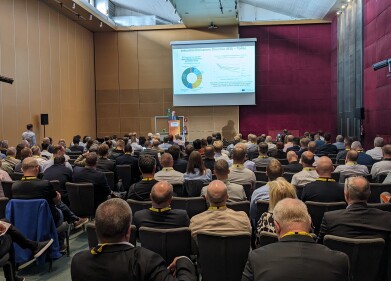Air monitoring
4 Ways to Reduce Black Carbon
Oct 01 2022
Much has been made in recent years of the global warming potential (GWP) of black carbon. A report conducted in 2013 found that the contaminant had roughly double the heating effect than previously thought, with its ability to retain solar energy at a rate of 1.1 watts per square metre second only to carbon dioxide’s 1.56 watts per square.
The good news, however, is that because black carbon persists in the atmosphere for a relatively brief period of time (days or weeks compared to CO2’s centuries or millennia), mitigation measures could have a much readily noticeable effect. So how, exactly, can we reduce the amount of black carbon that is emitted into our environment in the first place? Here are a handful of methods of cutting the contaminant at source.
Transportation
As one of the biggest sources of black carbon, diesel engines can provide an easy win for those looking to reduce concentrations of the contaminant in the environment. Indeed, they already have for many developed countries like the USA and much of Europe, where stricter standards on vehicle exhaust fumes have led to a sharp drop-off in ambient levels of black carbon. Implementing the same legislation in the developing world could result in massive gains.
Energy
Coal-fired power plants are another historical source of black carbon emissions that have been largely phased out in the western world, though they do persist in some regions. However, places like China and India, which have outsized populations and together account for over a third of all people on the planet, still rely heavily on coal for their energy demands. As such, doing away with coal power plants, upgrading older fossil fuel facilities and transitioning to cleaner sources of energy such as renewables is a key step forward.
Home fuels
It’s not just on an industrial scale that fossil fuels have a big impact on the black carbon climate, either. Combustion of wood, peat, dung and other biomass substances is still the primary method of heating homes and cooking food in many impoverished parts of the world. This not only contributes to global warming on a cumulatively surprising scale, but also has devastating health implications for those exposed to the contaminant in a confined space. Expanding electricity networks and tightening stove regulations would save the environment and public healthcare in one stroke.
Agriculture
In many parts of the world, especially in Asia and Latin America, the practice of crop stubble burning to clear away the remnants of last year’s harvest and prepare the terrain for the upcoming sowing season is widespread. Despite bans being in place in many jurisdictions, farmers still proceed with it anyway, safe in the knowledge that any repercussions will be either non-existent or not impact upon their business model in a meaningful way. Harsher penalties for transgressors must be brought to bear.
Digital Edition
AET 28.4 Oct/Nov 2024
November 2024
Gas Detection - Go from lagging to leading: why investment in gas detection makes sense Air Monitoring - Swirl and vortex meters will aid green hydrogen production - Beyond the Stack: Emi...
View all digital editions
Events
Jan 12 2025 Abu Dhabi, UAE
Jan 14 2025 Abu Dhabi, UAE
Jan 20 2025 San Diego, CA, USA
Carrefour des Gestions Locales de L'eau
Jan 22 2025 Rennes, France
Safety, Health & Wellbeing LIVE
Jan 22 2025 Manchester, UK
.jpg)


















